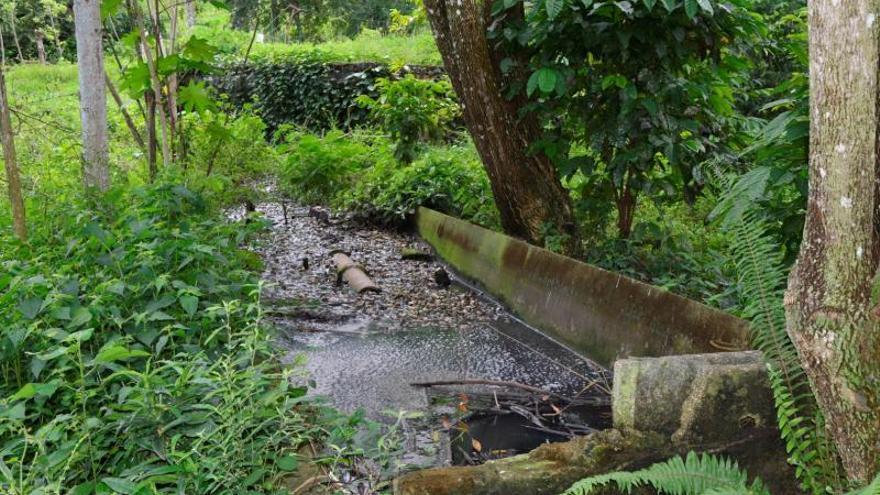
![]() 14ymedio, Havana, 14 November 2018 — Three months after the local press in Sancti Spíritus denounced the contamination of several tributaries of the Agabama and Sipiabo rivers, surrounding the municipality of Fomento, swimming has been banned in those waters by the authorities, due to the lack of action and the exchange of accusations between different institutions that have not yet resolved the situation.
14ymedio, Havana, 14 November 2018 — Three months after the local press in Sancti Spíritus denounced the contamination of several tributaries of the Agabama and Sipiabo rivers, surrounding the municipality of Fomento, swimming has been banned in those waters by the authorities, due to the lack of action and the exchange of accusations between different institutions that have not yet resolved the situation.
“What have the main entities done to take action to counteract the pollution of the aquifers? What factors have contributed to the phenomenon that instead of improving it is getting worse?”, questions an article in the Escambray newspaper, which notes that about five years ago bacteriological analysis of the water began.
Last July, the Provincial Center of Hygiene, Epidemiology and Microbiology reported that they had carried out analyses of 10 water samples in the swimming areas of Balnerario, Ramblazo and Campismo Popular La Hormiga, whose waters are fed by the Agabama and Sipiabo rivers. In all of them “the presence of total coliform bacteria and fecal coliform over the permissible parameters” were found, the official media reports.
Among the causes of the pollution reported by the Ministry of Public Health in October are the discharge of domestic wastewater and the excrement of pigs raised by individuals in their homes. Although experts from the Ministry of Science, Technology and Environment (Citma) maintain the hypothesis that the Agabama River is contaminated from Santa Clara.
The local press argues that, according to the provisions of Law No. 124 of Terrestrial Waters that governs the management of this resource and guarantees its protection and quality, the power to ensure the quality of water is the responsibility of the National Institute of Hydraulic Resources (INRH), Citma, the Ministry of Public Health, and the local bodies of the People’s Power. These organizations do not know how to come to agreement in order to to solve the water problem in Fomento.
“I was unaware of the magnitude of the closure of the swimming areas due to the contamination of surface waters,” the Provincial sub-delegate for Hydraulic Resources,Yusliadys Lorenzo Coca, told Escambray.
The Hydraulic Utilization Company does not seem to know anything about the situation, either. The technical director of the entity, Francisco Hernández Lorenzo, said that he also did not know about the imbalance, alleging that they are responsible for the sources of the supply. When the local journalists reminded him that the company is the owner of the water, the manager placed blame on a higher institution. “Public Health should have communicated to do a joint study, because this has an impact on the population,” he replied.
Citma, for its part, placed the responsibility on other institutions. “Who is responsible for taking action?, those who use the water and manage it: Hydraulic Resources, Agriculture, Azcuba, local bodies of the People’s Power,” said Néstor Álvarez Cruz, director of the Environmental Unit in Sancti Spíritus.
“While in the law there are many that bear responsibility, in practice few take action on the matter, and the solution may take as many years as the pollution lasts,” the Escambray article points out in conclusion, while denouncing the lack of knowledge on the part of the competent authorities, the lack of organization and the obsolescence of the infrastructure.
Translated by Wilfredo Díaz Echevarria
__________________________
The 14ymedio team is committed to serious journalism that reflects the reality of deep Cuba. Thank you for joining us on this long road. We invite you to continue supporting us, but this time by becoming a member of 14ymedio. Together we can continue to transform journalism in Cuba.
